Ophthalmology and Vision Care
OPEN ACCESS | Volume 5 - Issue 2 - 2025
ISSN No: 2836-2853 | Journal DOI: 10.61148/2836-2853/OVC
NKEREMUZOR E.C 1*, MEGWAS A. U 2, ESENWAH E.C 3, IKORO N.C 4
1 Federal University of Technology, Owerri, Imo State, Nigeria.
2 Federal University of Technology, Owerri, Imo State, Nigeria.
3 Federal University of Technology, Owerri, Imo State, Nigeria.
4 Federal University of Technology, Owerri, Imo State, Nigeria.
*Corresponding author: NKEREMUZOR, E.C, Federal University of Technology, Owerri, Imo State, Nigeria.
Received: November 05, 2025 | Accepted: November 15, 2025 | Published: November 20, 2025
Citation: NKEREMUZOR E.C, MEGWAS A. U, ESENWAH E.C, IKORO N.C., (2025). “The Effect Of Alcoholic Beverage (Orijin Beer) On The Visual Acuity, Near Point Of Convergence And Amplitude Of Accommodation, Of Young Adults, In Owerri” Ophthalmology and Vision Care, 5(2); DOI: 10.61148/2836-2853/OVC/064.
Copyright: © 2025 NKEREMUZOR, E.C. This is an open access article distributed under the Creative Commons Attribution License, which permits unrestricted use, distribution, and reproduction in any medium, provided the original work is properly cited.
The study on the effect of alcoholic beverage (Orijin beer) on the Visual acuity, Near point of convergence and Amplitude of Accommodation of Young Adults, was carried out in the Optometry Teaching Clinic, Federal University of Technology, Owerri, Imo State. 60 volunteers, between the ages of 18 and 35 years were used for this study. The pre and post-test methods of experimental design were employed.
Their binocular visual acuity, near point of convergence and amplitude of accommodation were evaluated before and after the intake of Orijin beer. Results showed a change in the average mean of visual acuity (in LogMAR fraction) from a baseline value of 0.08 to 0.07, 0.06, 0.06, 0.07, 0.08 and 0.08, every 20 minutes till 120 minutes; a change in the average mean of near point of convergence from a baseline value of 0.75 to 0.79, 0.80, 0.77, 0.77, 0.76 and 0.75 every 20 minutes till 120 minutes; and a change in the average mean of amplitude of accommodation from a baseline value of 11.22 to 9.73, 9.12, 9.53, 10.24, 10.54 and 11.21 every 20 minutes till 120 minutes. Using ANOVA method of data analysis where if F >Fcrit, reject Ho and accept H1 and if F < Fcrit, accept Ho and reject H1, Orijin was found to have significant effect on near point of convergence (F > Fcrit) and amplitude of accommodation (F> Fcrit) but no significant effect on visual acuity (F < Fcrit); and these effects differed between the male and female subjects.
Orijin beer, visual acuity, near point of convergence, amplitude of accommodation
Orijin is an alcoholic beverage which contains carbonated water, neutral spirit, sugar, citric acid, tri-sodium citrate, caramel, sodium benzoate, herbal and fruit flavours, and 6.0% volume of alcohol.
It is an alcoholic blend with the flavours of African herbs and fruits, combined to give a refreshing bitter-sweet taste (Guinness, 2013). As a beer, Orijin is made from malted cereal grains, flavoured with hops and brewed by slow fermentation (Micheal, 2015).
Blood alcohol concentration (BAC)/level is the amount or percentage of alcohol in the blood at any given time (Roberts and Robinson, 2007).
Since Orijin beer is an alcoholic beverage, it depresses the nervous system by affecting the nerve cells within the brain, thereby interfering with communication nerve cells from the peripheral nervous system and resulting in increased self confidence, blurred vision, reduces sense of smell and touch, etc. (Azuamah, et al., 2014).
Alcohol is absorbed from both the stomach (20%) and the upper small intestine (80%). Its rate of absorption varies according to the body makeup of various individuals. It is rapidly distributed throughout the body tissues via the blood plasma. Alcohol is preferentially distributed in tissues with higher water contents and a good blood supply (e.g. brain and skeletal muscles). A small proportion (2.5%) of alcohol absorbed is excreted unchanged in the urine, sweat or breath but the majority (>90%) is removed via oxidation by Alcohol dehydrogenase enzyme (ADH), especially hepatic ADH (Kent, 2012). 5% of BAC is metabolized and eliminated every 20 minutes following alcohol consumption. It will take 2 hours for ≥ 5.25% of alcohol to be completely eliminated from the body (David, 2015).
Visual acuity is the ability to see two separate objects as separate; and may be thought of as the ability to see a gap. There are different methods of measuring VA and these methods involve the use of different test charts, including: the Konig bar chart, the Landolt C or ring chart, the picture chart (for children), the Snellen illiteracy E or tumbling E chart, the Snellen literacy VA chart, the LogMAR VA chart, etc. (Grosvenor, 2007).
Near point of convergence is a measurement of how close one can bring a fixation target to the nose while maintaining fusion (Dimitra, et al, 2014). It is a standard test for convergence ability. Its measurement is taken using the push-up-to-blur method (Elliott, 2008).
Accommodation is the mechanism by which the eye changes its refractive power to view objects at various distances, by altering the shape of the crystalline lens (Turner, 2005).
Amplitude of accommodation is defined as the dioptric power needed to see clearly at near point (Khurana, 2011).
There are different methods of calculating or determining a patient’s amplitude of accommodation and they include; the Push-up/push-down method, Sheard’s technique/minus lens-to-blur-method, Duane-Hofstetter’s Formula for determining AA with age and Donders’ table of expected AA based on age (Grosvenor, 2007).
Over the years, researches have been done on the effects of the consumption of alcoholic beverages on the ocular system and visual function. Since Orijin beer was launched in 2013, it is increasingly becoming the beer of choice for young adults in Nigeria. Orijin beer is made up of natural herbs, amongst other ingredients and consumers may have the belief that these natural herbs may reduce the effect of the alcoholic content (6%) of the beer on the body and visual system; hence the desire of this research to find out the effect(s) of Orijin beer consumption (if any) on some of the determinants of visual function of healthy young adults, namely: Visual acuity, Near point of convergence and Amplitude of accommodation.
Materials And Methods
60 young adult volunteers, between the ages of 18 and 35 years, who are undergraduates of the Federal University of Technology, Owerri, were used for this study.
The pre-test and post-test methods of experimental design were employed.
The binocular visual acuity, near point of convergence and amplitude of accommodation of each volunteer were measured before the intake of (2 x 330ml) Orijin beer (6% vol. of alcohol each) and were repeated at the intervals of 20, 40, 60, 80, 100 and 120 minutes after the intake of Orijin beer.
The data gotten during this research were analyzed using ANOVA and represented with tables and bar charts.
Results
Research Hypothesis:
Null Hypothesis (H0)- There is no significant effect of Orijin beer on visual Acuity, Near point of convergence and Amplitude of accommodation. Also, these effects do no differ in males and females.
Alternate Hypothesis (H1)- There is significant effect of Orijin beer on visual acuity, Near point of convergence and Amplitude of accommodation. Also, these effects differ in both males and females.

Figure 1: Bar chart representing the average mean values of baseline VA and VA after 20, 40, 60, 80, 100 and 120 minutes of orijin intake.
Table 1: Anova for visual acuity.
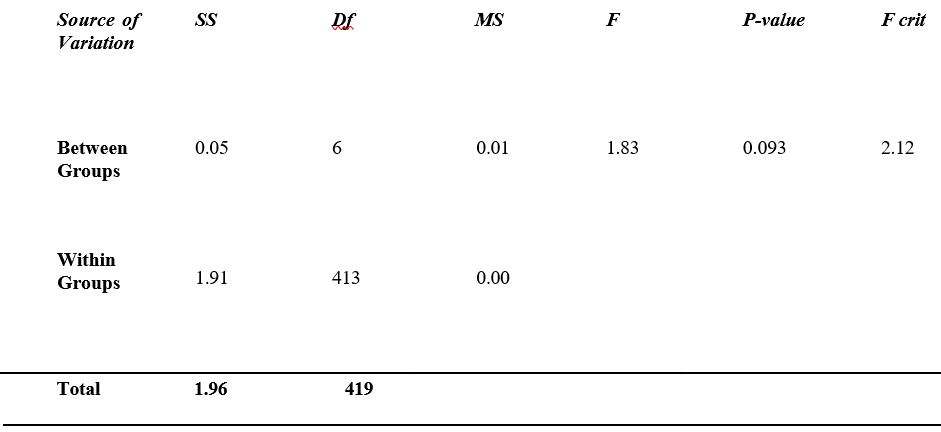
Decision rule
If F > Fcrit, reject H and accept H
o 1
If F < F crit, accept H and reject H
o 1
Since F = 1.83 < Fcrit = 2.12, we therefore accept the null hypothesis, reject the alternate hypothesis and conclude that there is no significant effect of Orijin beer on binocular distance visual acuity.
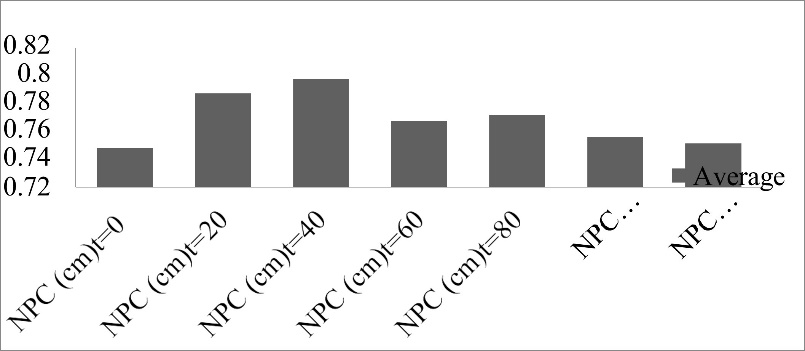
Figure2: Bar chart representing the average mean values of baseline NPC and NPC after 20, 40, 60, 80, 100 and 120 minutes of Orijin intake.
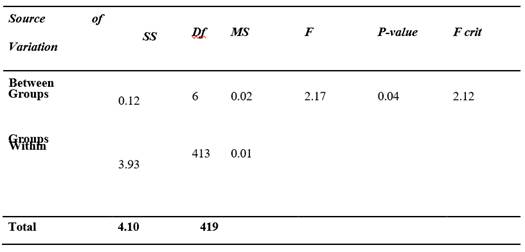
Table 2: ANOVA for Near point of convergence
Decision rule
If F > Fcrit, reject Ho and accept H1 If F < F crit, accept Ho and reject H1
Since F = 2.17 > Fcrit = 2.12, we therefore accept the alternate hypothesis, reject the null hypothesis and conclude that Orijin beer has a slight decreasing effect on near point of convergence.

Figure 3: Bar chart representing the average mean values of baseline AA and AA after 20, 40, 60, 80, 100 and 120 minutes of Orijin intake.
Table 3: ANOVA for AA
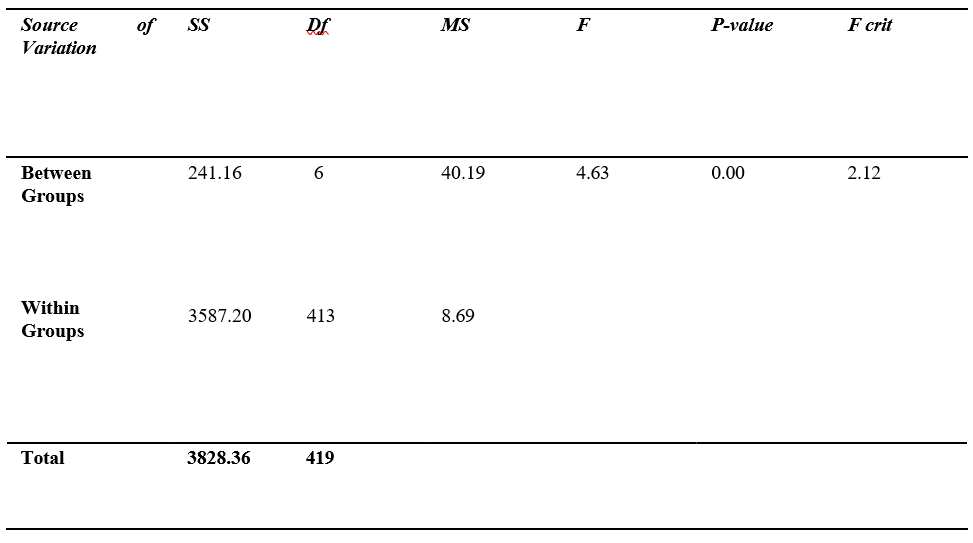
Decision rule
If F > Fcrit, reject H and accept H
o 1
If F < F crit, accept H and reject H
o 1
Since F = 4.63 > Fcrit = 2.12, we therefore accept the alternate hypothesis, reject the null hypothesis and conclude that Orijin beer has an effect on amplitude of accommodation.
Table 4: Average mean values for VA, NPC and AA for the male and female subjects.
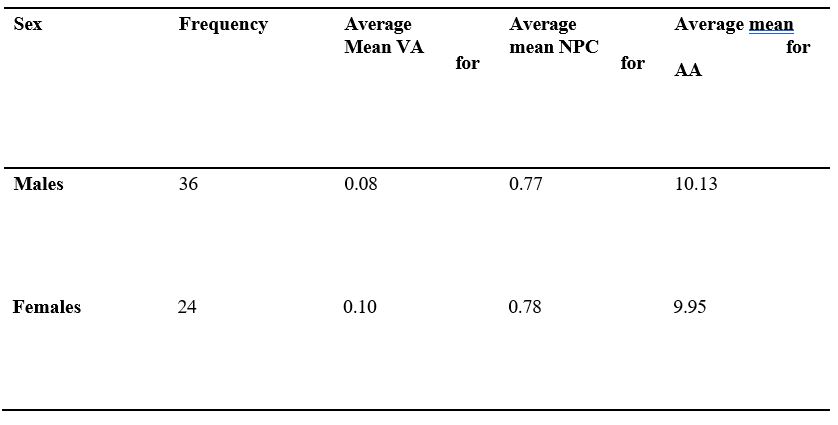
Decision rule
we reject the null hypothesis and accept the alternate hypothesis and conclude that the effect of Orijin beer on VA, NPC and AA varies between male subjects and the female subjects.
Discussion
Visual Acuity (VA).
The results obtained from this study (figures 1 and 2) showed that Orijin beer consumption has no significant effect on static, binocular, distance visual acuity. This agrees with the findings of similar studies carried out by Devereux, et al. (1992); Schmal et al. (2000) and Adams et al. (2002); where they stated that alcohol consumption has no significant effect on static distance visual acuity.
Near Point of Convergence (NPC).
The results obtained from this study on NPC (figures 3 and 4) showed that Orijin beer consumption has a decreasing effect on NPC. This finding agrees with the finding of similar studies carried out by Miller, et al. (1986) and Wilson and Mitchell (1983), which showed an increase in the exophoric deviation of the subjects 20 minutes following alcohol intake. This exophoria was found to increase further 40 and 60 minutes after the alcohol intake. They attributed this occurrence to a reduction in accommodative convergence and an associated reduction in muscle tonus by alcohol intake. According to Cooper and Jamal (2012), increased exophoria at near will result in a more remote NPC i.e., a decreased NPC.
Amplitude of Accommodation (AA).
The results obtained from this study on AA (Figures 5 and 6) showed that Orijin beer consumption decreased AA from an average value of 11.22 at 0 minute to 9.73, 9.12 at 20 and 40 minutes after Orijin intake. At 60, 80, 100 and 120 minutes, there was a gradual rise in AA to average values to 9.53, 10.24, 10.54 and 11.21. This finding agrees with the findings of similar studies carried out by Azuamal et al (2014); Miller, et al. (1986) and Uloneme et al (2014), where they stated that AA reduced 20 and 40 minutes after the intake of alcohol and then gradually returned to its baseline value from the 60 minute after the intake of alcohol.
These effects of alcohol ingestion on AA may be attributed to the effect alcohol has on the nervous system. Since alcohol is a nervous system depressant, it therefore means that alcohol could depress the parasympathetic aspect of the nervous system, which controls the ciliary muscles, thereby affecting accommodative processes and reducing amplitude of accommodation.
Sex
The results obtained from this study on the variation of the effect of Orijin beer on VA, NPC and AA between the sex or gender of the subjects used for this study (Figure 7) showed the average mean for VA for the males to be 0.08, while that of the females was 0.10. Also, the average mean for NPC for the males was 0.77, while that of the females was 0.78. The average mean for AA for the males was showed to be 10.13, while that of the females was 9.95. Kent (2012) and Kunchulia, et al, (2012) offered an explanation for this occurrence when they stated in their articles that BAC distribution differs with body composition. They stated that females generally have a proportionally lean body mass and smaller blood volume and since alcohol is preferentially distributed in tissues with higher water content and a good blood supply, the result will be a lower volume of distribution and higher BAC when females ingest the same amount of alcohol as men. They also suggested that the higher BAC may be due to lower FPM (first pass metabolism) by gastric ADH (alcohol dehydrogenase enzyme) in the gastric mucosa of females, increasing the bioavailability of alcohol and resulting in increased BAC. It has also been suggested by many studies that there is an increase in alcohol elimination in females compared to males due to the higher maximum BAC in females activating the CYP2E1 system to clear more alcohol (Mumenthaler et al., 1999).
Conclusion
It is clear from the results of this study that Orijin beer, just like other alcoholic beverages, elicits rather dramatic changes on the oculo-visual system thereby affecting visual function. This effect is more pronounced on amplitude of accommodation and near point of convergence but is not significant on visual acuity. The effect of Orijin beer consumption on visual acuity and near point of convergence was observed to be higher in the female subjects than the male subjects whereas the effect on amplitude of accommodation was higher in the male subjects than the female subjects.
Acknowledgment
I wish to acknowledge Dr. A. U. Megwas, who supervised this research work. I appreaciate all your encouragement and corrections.
I also wish to acknowledge Profs. E. C. Esenwah and N. C. Ikoro, for all their encouragement and support, during the course of this research work.
My special appreciation goes to my husband, Engr. Obinna P. Nkeremuzor, and my parents, Ezinna and Nnneoma C. Onosirike.
Conflicts Of Interest
All authors have declared that no conflict of interest exists.